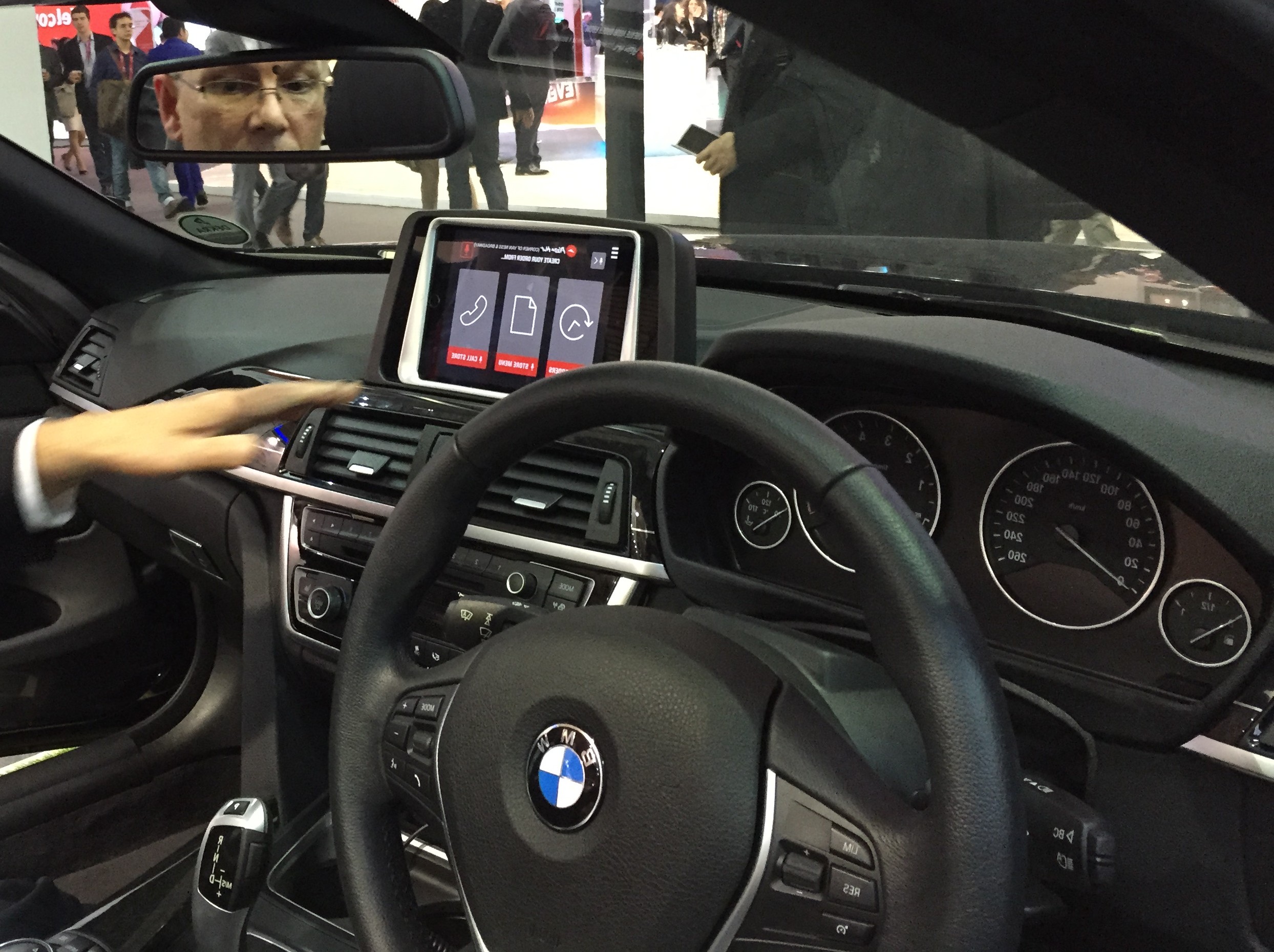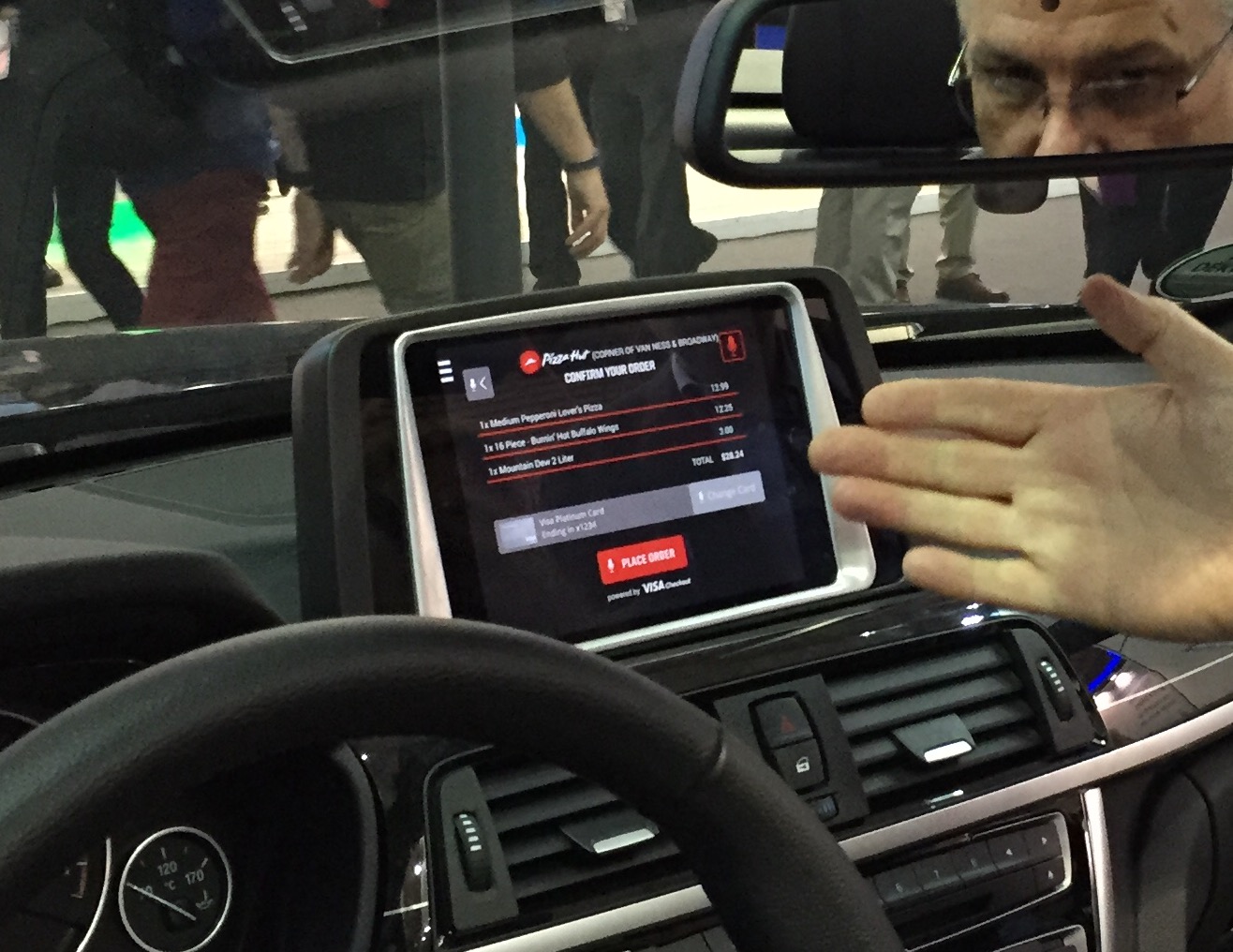
The kids are shouting in the back seat after a two-hour hockey practice, and all you want is to go home, pour a glass of wine and read a good book. But the kids are hungry, and there’s nothing in the house. What is a parent to do?
After midnight, this could be the beginning of an infomercial, but at Mobile World Congress, it’s the setup for Visa’s new Connected Car concept.
The payments and commerce giant announced this week a collaboration with Pizza Hut and SaaS provider, Accenture, to integrate elements of its mobile commerce experience into the car dashboard. It’s expected that a quarter billion cars will have integrated SIM cards by 2020, and a lot of the functionality one can do on a smartphone can be translated safely to a car dash.

Visa’s connected car uses Pizza Hut’s existing ecommerce platform to make ordering, payment and pickup a single linear experience. Visa’s part comes into play with Visa Checkout, its secure ecommerce credit card integration service launched last summer, which allows users to store credentials in the cloud for easy authentication and payment. The company noted at the time that checkout complexity results in millions of lost ecommerce transactions, particular on mobile devices, and a product like Checkout, and the equivalent by MasterCard, MasterPass, leads to fewer abandonments.
Using the cellular connection, the in-car Pizza Hut app finds the closest outlet, facilitates the order, and sends it through to the appropriate store. Customers can then drive to that location and, using beacon technology, service employees can locate the car in the parking lot and deliver the pizza without the driver getting out of the car. No cash or payment information is exchanged.
The same can work at gas stations, drive-throughs, or any other quick service location one regularly visits with a car.
Integration includes a technology developed by Visa called Interaction Voice Control, which authenticates the driver and allows in-app actions to be made using voice.
Whether Visa can work with these vendors, including the car manufacturers and infotainment providers like QNX, to integrate this kind of ecommerce functionality remains to be seen, but the concept was a vital and intriguing look at a largely-untapped potential for payments.
MobileSyrup may earn a commission from purchases made via our links, which helps fund the journalism we provide free on our website. These links do not influence our editorial content. Support us here.


